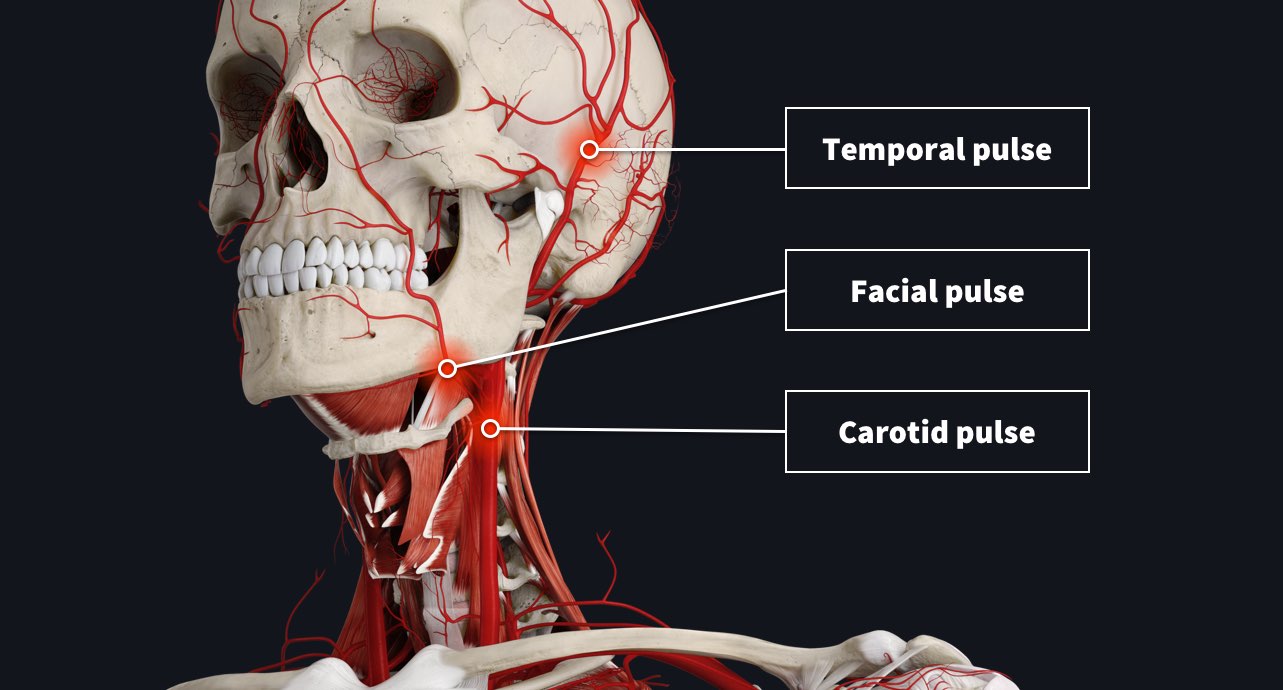
Over the next few weeks, we’ll be diving head first into the anatomical explanations for some of the routine procedures you may have experienced when visiting the doctor. ?⚕️ Let’s start by looking at what happens when you have your pulse taken. ?
There are a number of different parts of the body where the pulse can be taken. For example, in the upper limb ? the pulse can be measured at the wrist, or in the lower limb? on the front of the foot. Let’s take a look at the pulse points in the head in a little more detail.
It’s important to note that we can feel a pulse in each of these locations because an artery is running close to the skin and is easily compressed against a hard structure below. ☠️
In the head there are three pulse points (labelled above). They are:
- The carotid pulse – along the anterior border of the sternocleidomastoid muscle, the common carotid artery can be located and pushed against the thyroid cartilage.
- The facial pulse – as the facial artery passes over the angle of the mandible a pulse can be felt. See if you can find this one on yourself, it can sometimes be difficult to locate.
- The temporal pulse – in front of the ear, the superficial temporal artery can be compressed against the temporal bone.
Each time the heart beats ❤️ blood is forced into the periphery in ‘waves’? which causes the pressure of blood in the vessels increase. Because it is elastic, this increase in pressure makes the vessel expand. It is these increases in blood pressure, called the systolic pressure, which can be felt when someone takes your pulse. This means someone can measure the rate at which your heart is beating by taking your pulse ⏱️
As well as the heart rate, a clinician can also appreciate the rhythm of your heart – if it is beating regularly. Additionally they can even make a rudimentary assessment of the functionality of your heart – if the pulse is weak, the heart might not be pumping blood efficiently. This non-invasive method of assessment can tell us quite a lot about the old ticker!
Use the proven learning power of 3D anatomy to better understand the anatomical relations of the body with Complete Anatomy. Try it for FREE today.
If you found this blog post useful, you might also enjoy learning about the valves of the heart.
